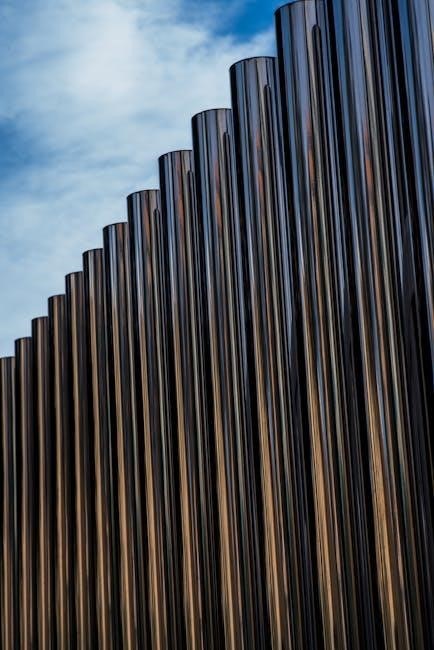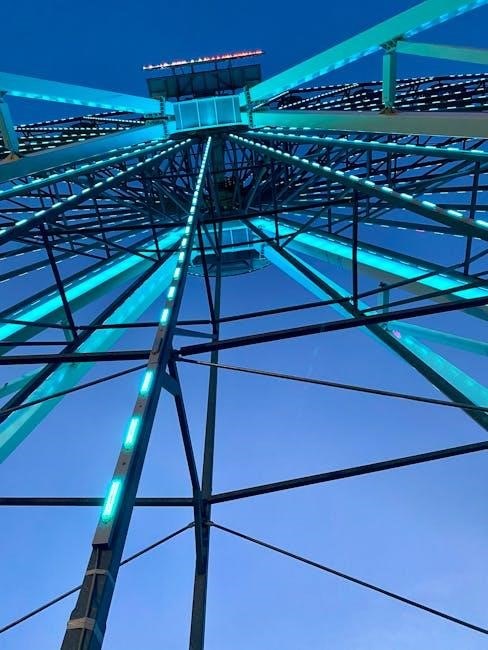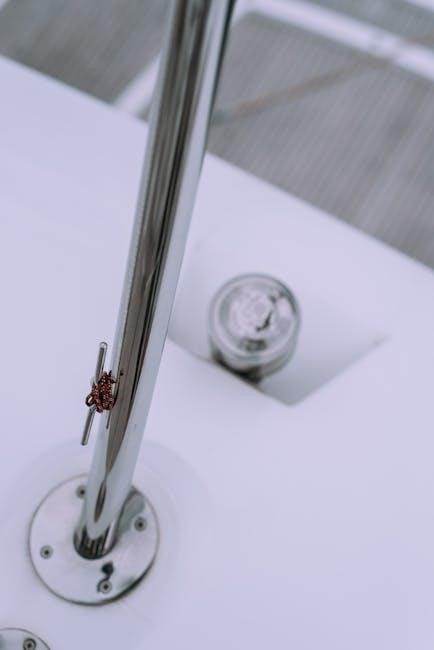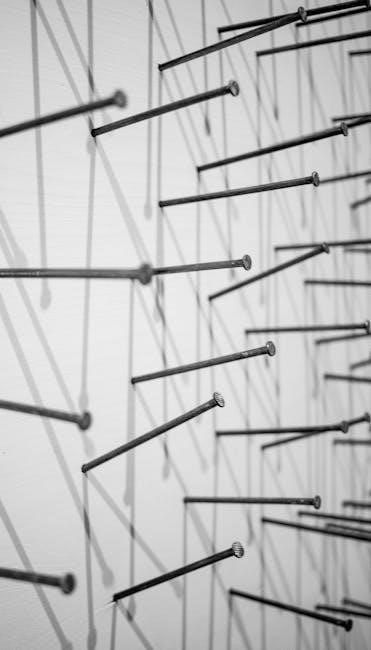Vertical metal siding installation is a complex process requiring careful planning and execution using various tools and equipment, including cutting tools and snap-on corner posts.
Overview of the Process
The vertical metal siding installation process involves several key steps, including preparation, installation, and finishing.
The installation guide provides a comprehensive overview of the process, including tools and equipment needed,
and step-by-step instructions for a successful installation.
The guide also covers important topics such as safety precautions,
material handling, and troubleshooting common issues that may arise during installation.
By following the guide, installers can ensure a professional-looking finish and a durable, long-lasting vertical metal siding system.
The process requires attention to detail and a thorough understanding of the materials and techniques involved.
Overall, the vertical metal siding installation process is a complex but rewarding task that requires careful planning and execution.
The guide is an essential resource for anyone involved in the installation process, providing valuable information and expertise.

Preparation for Installation
Preparation involves gathering necessary tools and equipment for a successful installation process begins.
Tools and Equipment Needed
To install vertical metal siding, various tools and equipment are required, including cutting tools, snap-on corner posts, and substrate materials.
A list of necessary tools and equipment should be gathered before starting the installation process to ensure a smooth and efficient installation.
The tools and equipment needed may vary depending on the specific type of vertical metal siding being installed, such as traditional lap or board and batten.
It is essential to have all the necessary tools and equipment on hand to avoid delays and ensure a successful installation.
The installation guide should provide a comprehensive list of the tools and equipment needed for the specific type of vertical metal siding being installed.
By having all the necessary tools and equipment, installers can ensure a professional-looking finish and a durable installation that will last for many years.
Understanding Vertical Metal Siding
Vertical metal siding offers durability and fire resistance, making it a popular choice for building exteriors with various styles and designs available for installation purposes.
Benefits of Vertical Metal Siding
Vertical metal siding has numerous benefits, including its durability and fire resistance, making it a popular choice for building exteriors. It is also resistant to cracking, peeling, and melting, and is made from recyclable materials. Additionally, vertical metal siding is available in a variety of styles and designs, allowing homeowners to choose the look that best suits their needs. The siding is also low maintenance, as it does not require frequent painting or repairs. With its many benefits, vertical metal siding is a great option for those looking to install a durable and long-lasting exterior finish. It is also environmentally friendly, as it is made from recycled materials and is 100% recyclable, making it a great choice for those looking to reduce their environmental impact.

Installation Guides and Resources
Comprehensive installation guides and resources are available online for vertical metal siding, including step-by-step instructions and detailed diagrams for a successful installation process always.
Comprehensive Resources for Installation
Comprehensive resources for vertical metal siding installation are readily available, including detailed guides and instructional videos. These resources provide valuable information on the installation process, from preparation to completion. They cover various aspects, such as tools and equipment required, safety precautions, and troubleshooting common issues. Additionally, many manufacturers offer specific installation guides for their products, which can be downloaded from their websites. These guides often include step-by-step instructions, diagrams, and photos to help ensure a successful installation. By utilizing these comprehensive resources, installers can gain the knowledge and confidence needed to complete a professional-grade vertical metal siding installation. Overall, having access to these resources is essential for a successful installation. They help to ensure that the job is done correctly and efficiently.

Step-by-Step Installation Instructions
Follow detailed step-by-step guides for vertical metal siding installation using various tools and equipment correctly always.
Following the Installation Guide
To ensure a successful installation, it is crucial to follow the installation guide carefully. The guide provides detailed instructions on how to install vertical metal siding, including preparing the site, installing the siding, and finishing the job. By following the guide, installers can avoid common mistakes and ensure that the siding is installed correctly and safely. The guide also provides tips and recommendations for handling different types of metal siding and addressing potential issues that may arise during the installation process. Additionally, the guide includes information on the necessary tools and equipment, as well as safety precautions to take during the installation. Overall, following the installation guide is essential for a successful and efficient installation of vertical metal siding. This will help to achieve a professional-looking finish and ensure the siding lasts for many years.

Common Challenges and Solutions
Installers may encounter issues with metal siding alignment and fastening during installation processes always.
Troubleshooting Common Issues
Troubleshooting common issues during vertical metal siding installation is crucial for a successful project. Installers should be aware of potential problems such as misaligned panels, loose fasteners, and damaged siding. A comprehensive guide can provide step-by-step instructions for identifying and resolving these issues. By following the guide, installers can ensure a smooth installation process and minimize delays. Additionally, a well-organized guide can help installers troubleshoot issues related to weather tightness, structural integrity, and aesthetic appeal. Proper troubleshooting techniques can also help prevent costly repairs and ensure the longevity of the vertical metal siding. With the right guidance, installers can overcome common challenges and achieve a professional-grade installation. This requires attention to detail, patience, and a thorough understanding of the installation process and potential pitfalls. Effective troubleshooting is essential for a successful vertical metal siding installation project.
and Final Check
Final inspection ensures vertical metal siding installation meets quality standards and specifications perfectly always.
Ensuring a Successful Installation
To ensure a successful vertical metal siding installation, it is crucial to follow the installation guide carefully and use the right tools and equipment. A thorough understanding of the process and materials is also essential. The installation guide provides step-by-step instructions and helpful tips to ensure a successful installation. Additionally, a final inspection is necessary to ensure that the installation meets quality standards and specifications. By following these guidelines and taking the necessary precautions, a successful installation can be achieved, providing a durable and attractive exterior for the building. The use of high-quality materials and careful planning can also help to prevent common issues and ensure a long-lasting installation. Proper installation is critical to the overall appearance and performance of the vertical metal siding.
